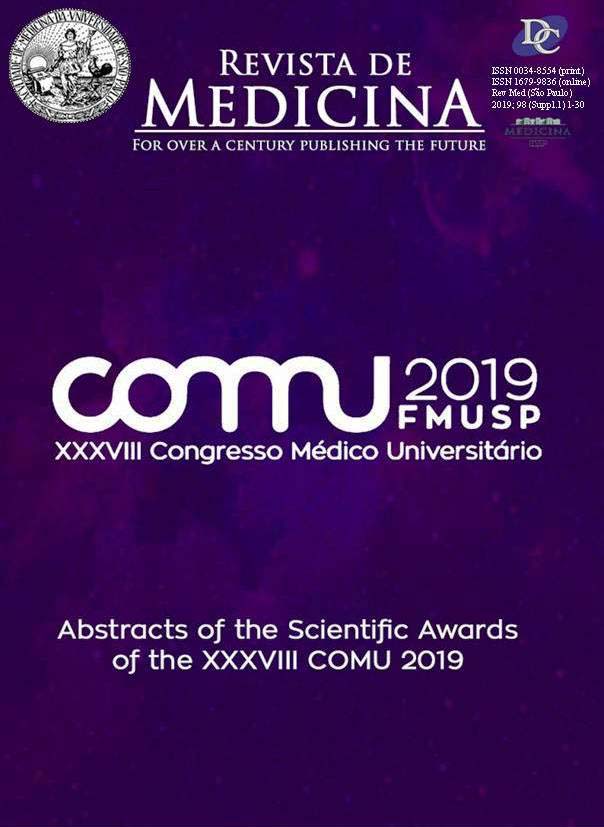Analysis of the use of photosensitization in human glioblastoma multiforme to induce cell death
DOI:
https://doi.org/10.11606/issn.1679-9836.v98iSupplp23-23Palavras-chave:
Glioblastoma, Autophagy, Mitochondrial degradation, PhotochemotherapyResumo
Introduction: The most frequent primary tumor of the central nervous system is the malignant glioma, being the glioblastoma (GBM), grade IV astrocytoma, the most aggressive and lethal glioma. Malignant astrocytomas are responsive for therapy targeting autophagy as temozolomide, the standard adjuvant treatment which induces autophagic cell death. Autophagy is a homeostatic intracellular process that eliminate old proteins and recycle cellular components. Mitophagy is a subtype of autophagy that regulates the removal of damaged, dysfunctional or redundant mitochondria. Parallel damage against lysosomes and mitochondria membranes using photosensitized oxidations and strong redox stress leads to activation of mitophagy and malfunction of autophagy. This mechanism of photosensitization, ultimately, causes cell death. Challenging cells with a low concentration of a photosensitizer as 1,9-dimethyl methylene blue (DMMB) combined with light- irradiation of 12 joules/cm2 have induced mitochondrial damage with activation of mitophagy and concomitant lysosome damage, in skin-derived cell lines. This experimental design was applied to U87MG GBM cells to verify if tumor cell death may be obtained with combined mitochondrial and lysosomal damages to open new therapeutic strategies for GBM and to better understand the mechanisms of mitophagy.
Objectives: Our primary objective is to analyze the impact of challenging GBM cells with a low concentration of 1,9-dimethyl methylene blue (DMMB) with combined light- irradiation of 12 joules/cm2.
Methodology: U87MG a human GBM cell line was used. The photodamage was performed using DMMB photosensitized by a LED with maximum emission wavelength at 630 nm providing 12 J/cm2. Cell proliferation and viability assays were performed using MTT to assess whether there was proliferation inhibition and/or alteration of cell viability after photosensitization. Quantification of cells in different stages of apoptosis, and in the various phases of the cell cycle were analyzed using flow cytometry after photosensitization. Acridine orange assay was used to assess lysosome damage. RT-PCR and Western Blotting were performed to evaluate the expression levels of the main autophagy and mitophagy genes and proteins.
Partial Results: Cell proliferation and viability assays demonstrated that the concentration of DMMB to cause 50% inhibition of biological activity of cells (IC50) was 10 nM after 48h. The apoptosis and cell cycle experiments were performed in this concentration. Increase in apoptosis was observed after 24hs of photosensitization. Currently, the cell cycle flow cytometry assay has been performed, followed by the quantification of lysosomes damage by Acridine Orange assay. The genes and proteins involved in the mechanisms of autophagy and mitophagy will be determined by expression analysis through RT-PCR and Western blot assays.
Discussion and Conclusion: For a future perspective, if this prove of concept is achieved, i.e. death of tumor cells by the combined approach of photosensitizer with irradiation, a new therapeutic strategy of light-activated drugs may be offered to cancer patients.
Downloads
Downloads
Publicado
Edição
Seção
Licença
Copyright (c) 2019 Revista de Medicina

Este trabalho está licenciado sob uma licença Creative Commons Attribution-ShareAlike 4.0 International License.




